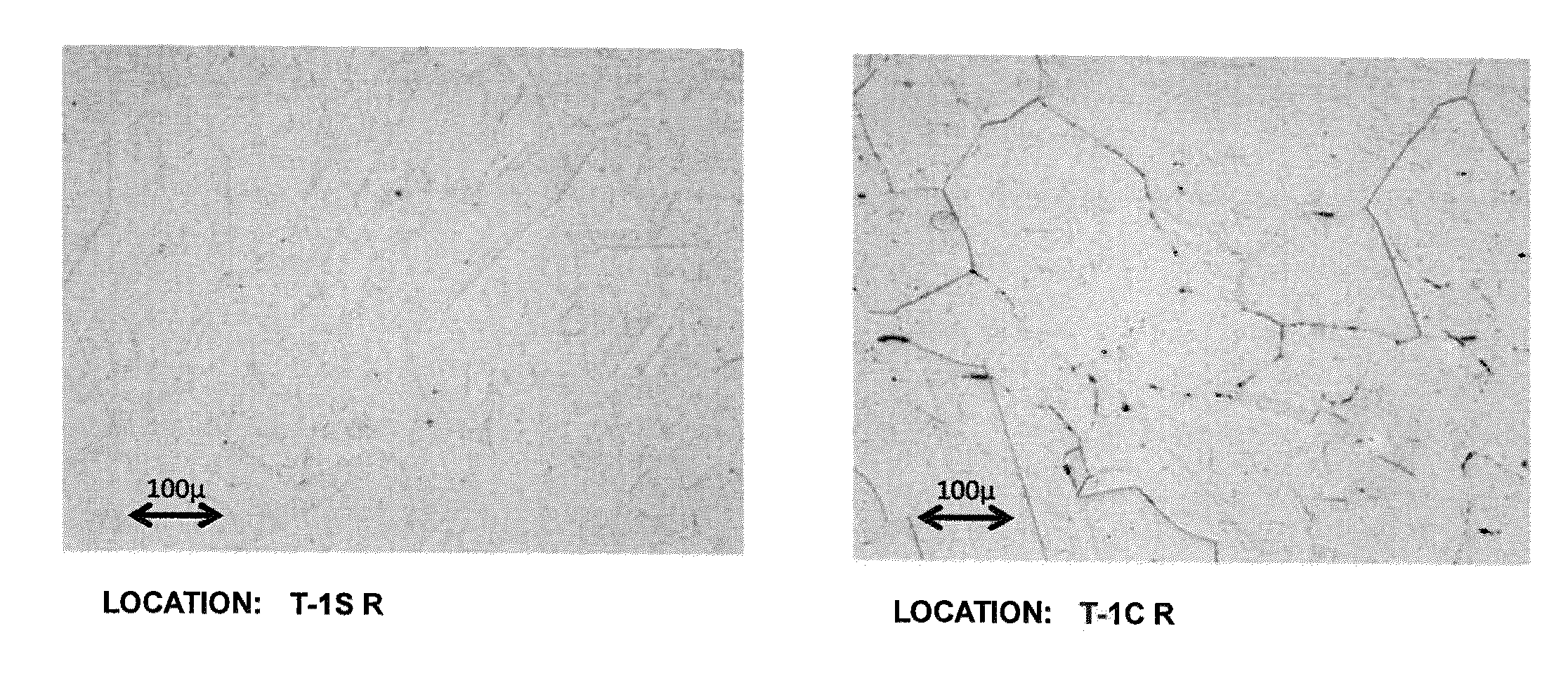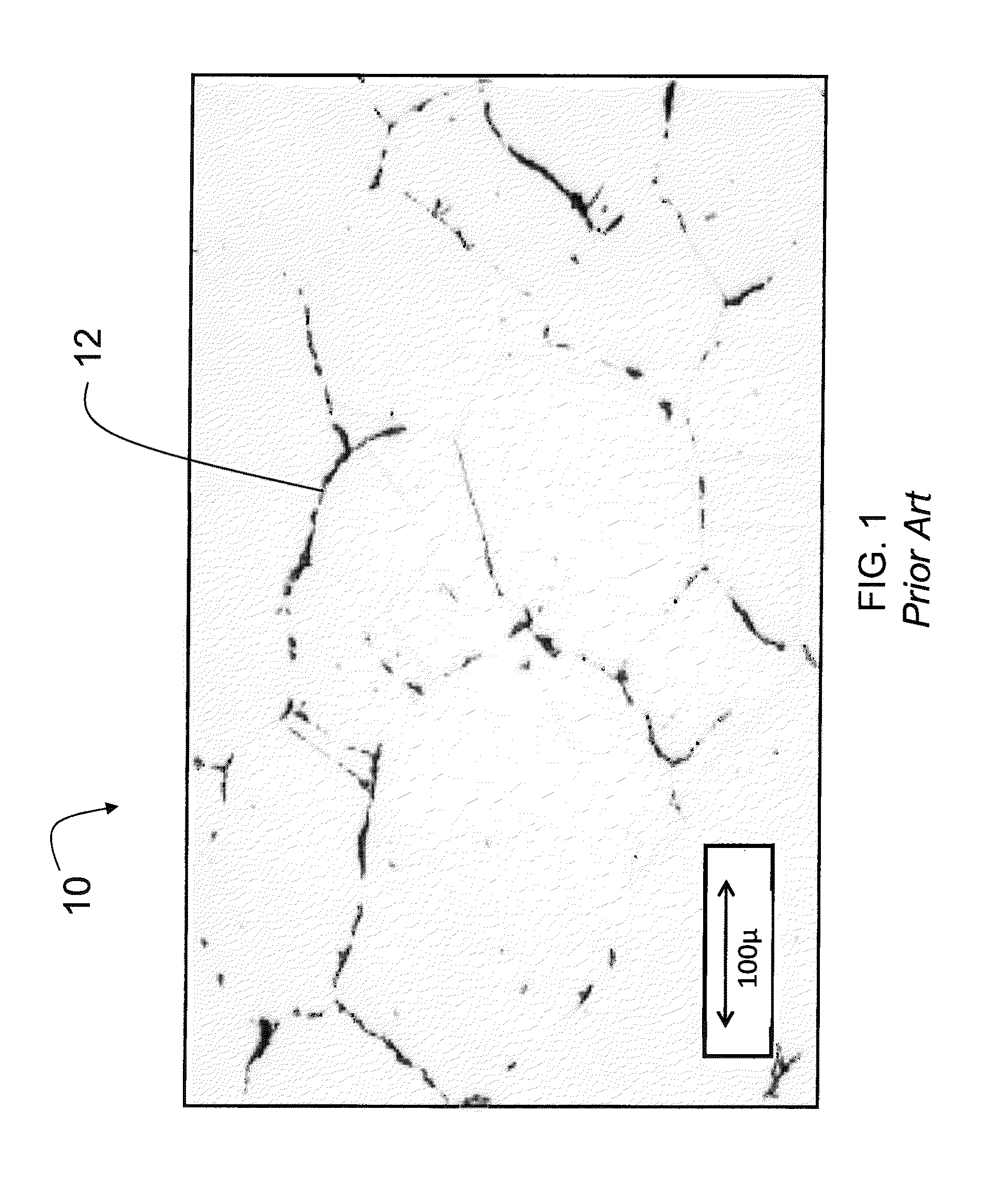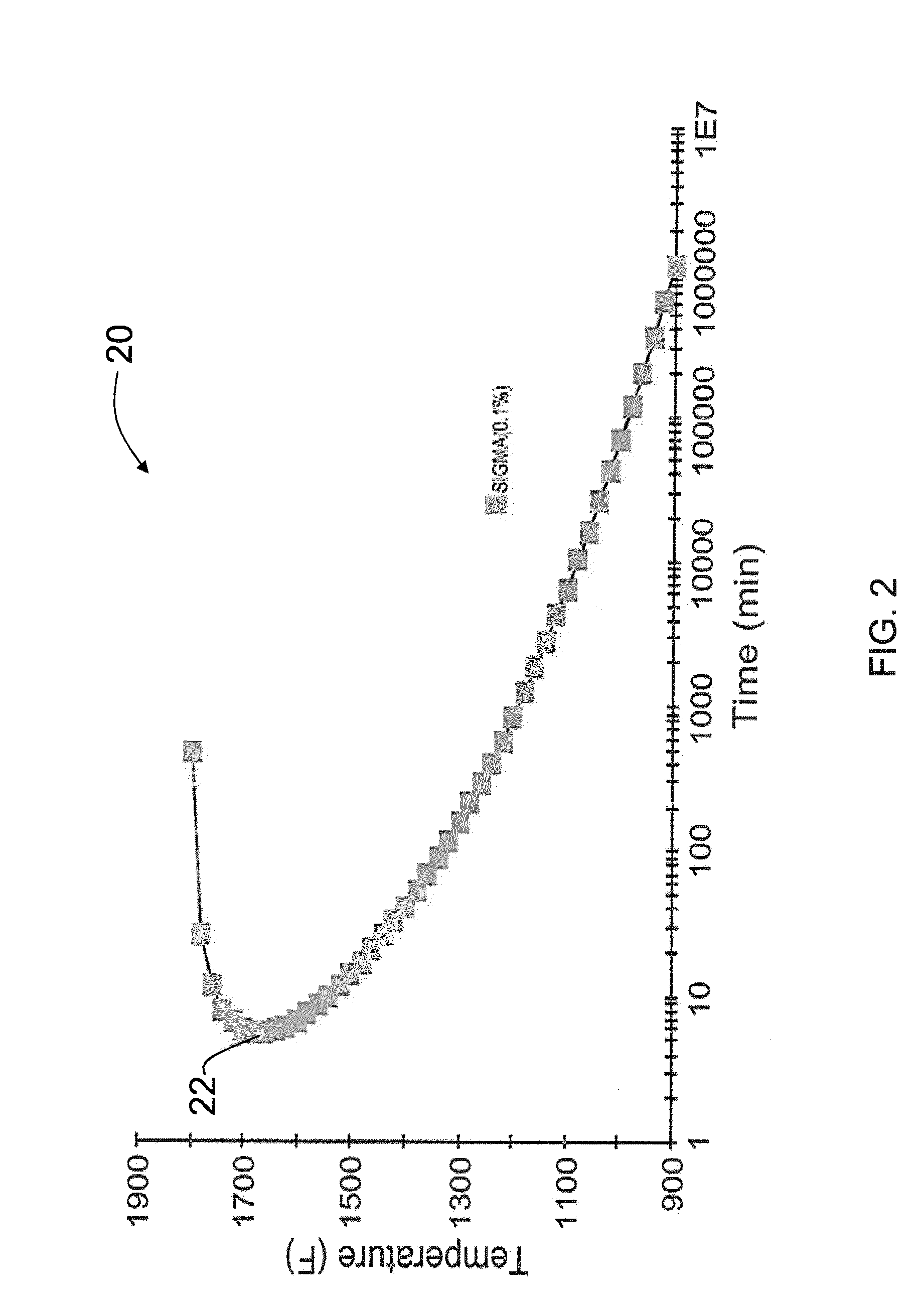Methods for processing alloys
- Summary
- Abstract
- Description
- Claims
- Application Information
AI Technical Summary
Benefits of technology
Problems solved by technology
Method used
Image
Examples
example 1
[0108]FIG. 6 shows an example of a TTT diagram 80 for an alloy that has a relatively short allowable critical cooling time as calculated using Equation 3 of the present disclosure. The chemical composition of the alloy that is the subject of FIG. 6 includes, in weight percentages: 26.04 iron; 33.94 nickel; 22.88 chromium; 6.35 molybdenum; 4.5 manganese; 3.35 cobalt; 1.06 tungsten; 1.15 copper; 0.01 niobium; 0.26 silicon; 0.04 vanadium; 0.019 carbon; 0.386 nitrogen; 0.015 phosphorus; and 0.0004 sulfur. For this alloy composition, the calculated sigma solvus temperature 82 calculated according to Equation 1 of the present disclosure is about 1859° F.; the cooling temperature 84 calculated according to Equation 2 of the present disclosure is about 1665° F.; and the critical cooling time 86 calculated according to Equation 3 of the present disclosure is about 7.5 minutes. According the present disclosure, in order to prevent precipitation of the deleterious intermetallic phase, the work...
example 2
[0110]FIG. 8 shows an example of a TTT diagram 90 for an alloy that has a longer critical cooling time calculated using Equation 3 than the alloy of FIG. 6. The chemical composition of the alloy of FIG. 8 comprises, in weight percentages: 39.78 iron; 25.43 nickel; 20.91 chromium; 4.78 molybdenum; 4.47 manganese; 2.06 cobalt; 0.64 tungsten; 1.27 copper; 0.01 niobium; 0.24 silicon; 0.04 vanadium; 0.0070 carbon; 0.37 nitrogen; 0.015 phosphorus; and 0.0004 sulfur. The calculated sigma solvus temperature 92 for the alloy calculated according to Equation 1 is about 1634° F.; the cooling temperature 94 calculated according to Equation 2 is about 1556° F.; and the critical cooling time 96 calculated according to Equation 3 disclosure is about 28.3 minutes. According the method of the present disclosure, in order to prevent precipitation of the deleterious intermetallic phase within the alloy, the alloy must be formed and cooled when in the temperature range spanning a temperature just below...
example 3
[0112]Samples of the non-magnetic austenitic alloy of heat number 49FJ (see Table 1) were provided. The alloy had a calculated sigma solvus temperature calculated according to Equation 1 of 1694° F. The alloy's cooling temperature calculated according to Equation 2 was 1600° F. The time to the nose of the C curve the TTT diagram (i.e., the critical cooling time) calculated according to Equation 3 was 15.6 minutes. The alloy samples were annealed at 1950° F. for 0.5 hours. The annealed samples were placed in a gradient furnace with the back wall of the furnace at approximately 1600° F., the front wall of the furnace at approximately 1000° F., and a gradient of intermediate temperatures within the furnace between the front and back wall. The temperature gradient in the furnace is reflected in the plot depicted in FIG. 10. The samples were placed at locations within the furnace so as to be subjected to temperatures of 1080° F., 1200° F., 1300° F., 1400° F., 1500° F., or 1550° F., and w...
PUM
| Property | Measurement | Unit |
|---|---|---|
| Temperature | aaaaa | aaaaa |
| Percent by mass | aaaaa | aaaaa |
| Percent by mass | aaaaa | aaaaa |
Abstract
Description
Claims
Application Information
 Login to View More
Login to View More - R&D
- Intellectual Property
- Life Sciences
- Materials
- Tech Scout
- Unparalleled Data Quality
- Higher Quality Content
- 60% Fewer Hallucinations
Browse by: Latest US Patents, China's latest patents, Technical Efficacy Thesaurus, Application Domain, Technology Topic, Popular Technical Reports.
© 2025 PatSnap. All rights reserved.Legal|Privacy policy|Modern Slavery Act Transparency Statement|Sitemap|About US| Contact US: help@patsnap.com



